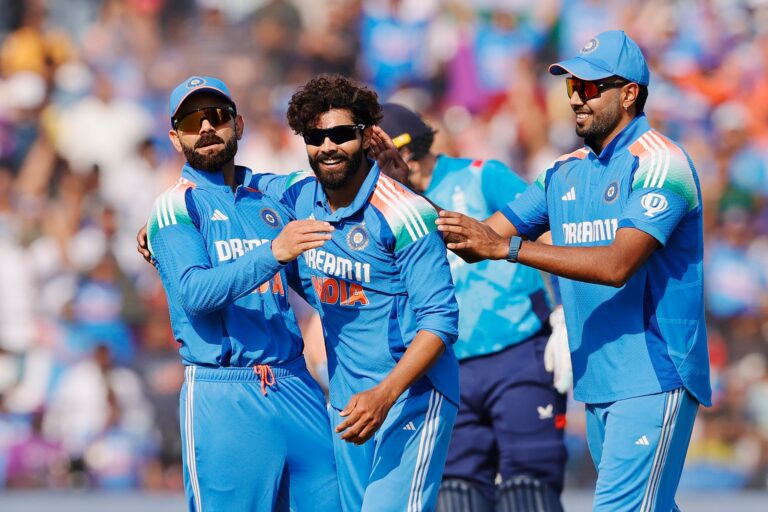Cricket Time Management is one of the most underrated skills in modern cricket, yet it silently decides momentum, clarity, and outcomes on the field. Whether it is a fast-paced T20 or a grinding Test session, players who understand how to control the tempo of the game often stay ahead mentally long before the scoreboard shows it. Fans mostly notice runs and wickets, but what shapes them is the timing of decisions, pauses, resets, and energy utilization across overs and sessions.
Players who last long at the crease are not just physically strong, they are rhythmically intelligent. They know when to accelerate and when to breathe. Just like batting technique or bowling variation, internal pacing is a craft that matures with awareness. And while spectators see big shots or yorkers, professionals know the invisible battle is about time — how quickly or slowly a moment is allowed to unfold.
Understanding the Role of Cricket Time Management
Every ball in cricket carries its own tempo. A batter must sometimes slow the game down to settle nerves, while in other moments they must speed up decision-making to grab momentum. Without mindful pacing, the match begins to dictate the player instead of the player dictating the match. A bowler hurrying between deliveries may lose line or length; a batter rushing into shots may gift a wicket. Well-timed composure becomes strategy.
Great captains treat time like a tactical currency. They don’t just think about where the game is — they think about where the rhythm is heading. When a fielding side drags its pace during pressure moments, it is not laziness; it is tactical slowing to disrupt the batter’s flow. The scoreboard is a reflection of execution, but time is a reflection of control.
Why Cricket Time Management Defines Match Rhythm
The outcome of a close match is often sealed by who managed the rhythm better. In T20s, a single over can flip momentum, but in Tests a single session can rewrite narrative. Mastering timing means knowing when to attack, when to stabilize, and when to mentally reset without allowing emotions to rush decisions.
When a batter takes a few seconds more to refocus after a near-miss, it is not delaying — it is reinforcing concentration. Similarly, a bowler who walks back slower after conceding a boundary is rebuilding inner balance. The clock on the stadium does not track this, but the psychological clock of the player does.
Time Awareness and Clarity Under Pressure
A cricketer with strong time awareness knows that panic thrives in hurry. Slowing the moment enables a cleaner choice in technique. Controlled breathing, brief breaks between overs, mindful glove adjustments, or even a short chat with a partner are ways of defending mental clarity. These micro-pauses help players return to process over panic.
The difference between a rushed decision and a measured one is often just two seconds of stillness. That tiny pause is not physical recovery — it is emotional recalibration. At the highest level, cricket rewards those who manage not just skill, but tempo.
Turning Timing Into Tactical Advantage
Elite players carry invisible time strategies during crunch phases. A captain may intentionally slow a bowler’s run-up tempo to break a batter’s rhythm. A set batter may hold strike longer to navigate pressure overs. These small, unseen adjustments decide tension. The match looks smooth on screen, but inside the ropes, players are constantly bending the clock to their advantage.
Time is not just a clock — it is rhythm. Whoever sets the rhythm builds the narrative. The scoreboard follows afterward.
Mental Pacing Across Overs and Innings
Time management also helps conserve emotional energy. A player who rushes through overs burns mental stamina faster than needed. The ones who stay grounded pace their reactions. They understand that cricket is not a continuous sprint; it is a series of controlled bursts. Even in extreme pressure, slow breathing keeps the mind fast while keeping panic slow.
The most composed finishers in world cricket are masters of tempo. They do not let the match speed them up until they choose to accelerate. Their poise is not luck—it is trained time literacy.
When Awareness Shapes Performance
Sometimes the turning point of a match comes disguised as a short moment of silence — a pause before the run-up, a glance toward the field, or a deep breath before a chase-shifting shot. These are not delays; they are deliberate stabilizers. The game rewards presence, and presence is built on time intelligence.
A player who manages time manages momentum. A player who manages momentum manages the match. Through stillness, the right instincts rise. Through patience, execution sharpens. And through awareness, confidence stays anchored when everything around feels urgent.
Read also:
philadelphia eagles vs washington commanders match player stats
lakers vs okc thunder stats
teilnehmer: philadelphia eagles gegen dallas cowboys spielerstatistiken spiel
lakers vs timberwolves match player stats
rameshwaram cafe franchise
ekart logistics franchise application form
acasa capital

